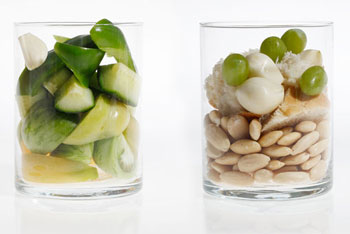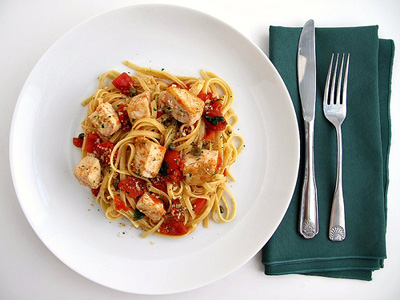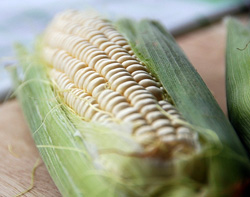 Gazpacho, how much do I love you? This cold, raw tomato soup hails from Andalusia, Spain and if I don’t get my butt to España soon I will be forever cranky. I could easily dedicate an entire blog about the country of Spain, it’s one of my favorite places on the planet that I would gladly pack up and move to tomorrow if I had my druthers.
Gazpacho, how much do I love you? This cold, raw tomato soup hails from Andalusia, Spain and if I don’t get my butt to España soon I will be forever cranky. I could easily dedicate an entire blog about the country of Spain, it’s one of my favorite places on the planet that I would gladly pack up and move to tomorrow if I had my druthers.
The only problem is that a) I am an American so there’s that pesky paperwork problem and b) I’d fall asleep at the dinner table each and every night. Oh who am I kidding? I would have been in bed for 2 hours by the time everyone assembles for dinner. Old man, me.
These two recipes for gazpacho come from Chef José Andrés. Whenever I think of him I get warm and tingly and I am thankful that he has chosen to live here in the US. I believe it makes this a better place, for sure.

 Every Friday night I like to do pasta night. I love pasta dishes because they're quick to make and so satisfying to eat. And they don't at all need to be complicated. Sometimes all you need are a few pantry staples like canned tomatoes, capers, or olives to make a delicious sauce that doesn't take hours to cook. That's the true appeal of pasta.
Every Friday night I like to do pasta night. I love pasta dishes because they're quick to make and so satisfying to eat. And they don't at all need to be complicated. Sometimes all you need are a few pantry staples like canned tomatoes, capers, or olives to make a delicious sauce that doesn't take hours to cook. That's the true appeal of pasta. I knew last week was going to be a good week. On Monday, I opened my Henry's Market weekly flier and right there on the front page: "California Sweet Corn 3 for $1 - First of the Season."
I knew last week was going to be a good week. On Monday, I opened my Henry's Market weekly flier and right there on the front page: "California Sweet Corn 3 for $1 - First of the Season." I love unique spring vegetables—it's the reason why I write about such things like ramps and fiddleheads so much. For me there's nothing better than combining my favorites in one recipe to celebrate the spring season. Ramps on their own would make a particularly good soup. But looking for a contrasting flavor to pair it with, I thought of sorrel. With its tart and citrusy flavor, the leafy green is a perfect foil for pungent and oniony ramps.
I love unique spring vegetables—it's the reason why I write about such things like ramps and fiddleheads so much. For me there's nothing better than combining my favorites in one recipe to celebrate the spring season. Ramps on their own would make a particularly good soup. But looking for a contrasting flavor to pair it with, I thought of sorrel. With its tart and citrusy flavor, the leafy green is a perfect foil for pungent and oniony ramps. Who doesn't love a good tangy pasta salad? I have tried many, many recipes over the years and I have to say I like the idea of antipasto meets pasta salad.
Who doesn't love a good tangy pasta salad? I have tried many, many recipes over the years and I have to say I like the idea of antipasto meets pasta salad.